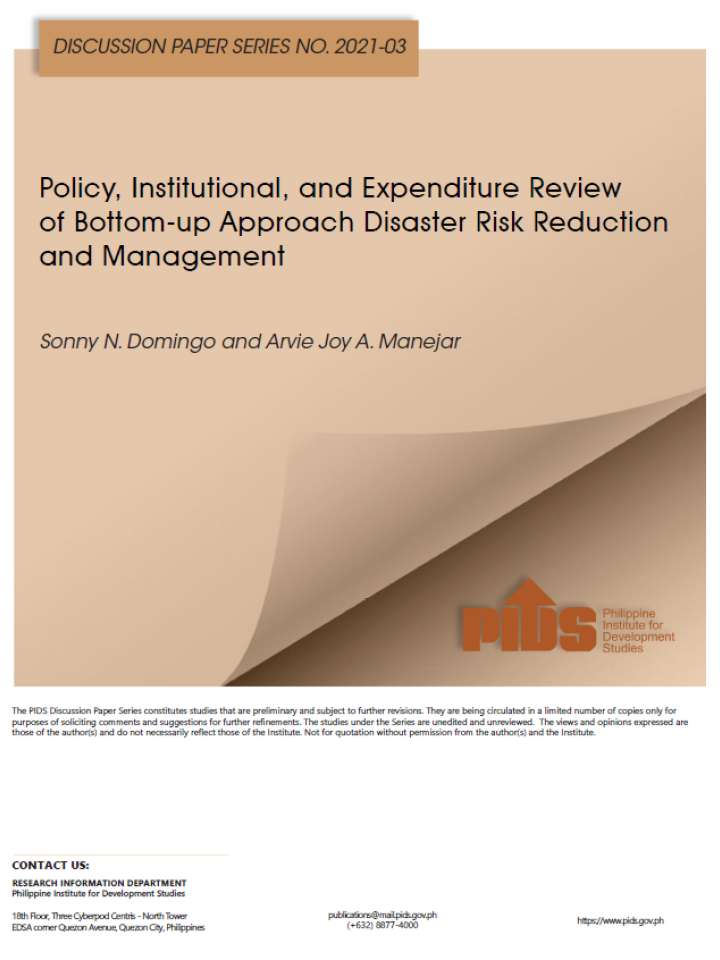Policy, institutional, and expenditure review of bottom-up approach disaster risk reduction and management
This publication discusses how the Republic Act(RA) 10121, or the Philippine Disaster Risk Reduction Management (DRRM) Act of 2010, has led to the passing of complementary legislation and functional policy, bureaucratic and institutional augmentations and directed government budgeting and spending. Key thematic mandates were given to NGAs, while the bulk of policy implementation, institutional grounding, and resource allocation related to DRRM were devolved to local government units, granting them fiscal and administrative authority.
The policy also facilitated opportunities and invitations for participatory bottom-up approaches, but gaps existed on structured reporting and appraisal of DRRM budget and spending, and bottom-up participation. This study added to the discourse by looking at the status and trends of public investment and policy initiatives, and bottom-up and participatory mechanisms. Using mixed-methods, qualitative inputs from KIIs and FGDs and quantitative data encoded from the DILG-Full Disclosure Policy Portal (FDPP) 2015-2019 were used to provide evidence and establish narratives on how policy, institutional structures, and public investment contributed to LGU functioning and community preparedness and participation. It was found out that there were sub-optimal allocations despite the abundance of fiscal resource in both national and subnational governments regardless of location and income levels, the highest utilization rate for which were identified in disadvantaged regions (ARMM, Region 3, Region 9).
The low utilization rates were largely attributed to unclear issuances from oversight agencies or spending preferences of local administrations. As the predominant arrangement across DRRM landscape was still top-down, communities have much to lose due to their weak visibility in participatory governance and nearly invisible decision-making powers in the formulation of plans and approval of programs. While community resilience was stated to be the core of RA 10121, institutional structures still needed strengthen their enabling mechanisms for representation and stakeholder participation; expenditures should explicitly support more community-led initiatives as well as proposals from sectoral committees, and barangay councils; and monitoring and evaluation strategies should be able to capture and track accurately DRRM funds, goods and services, across agencies, fund sources, and varying enabling conditions.
Explore further
